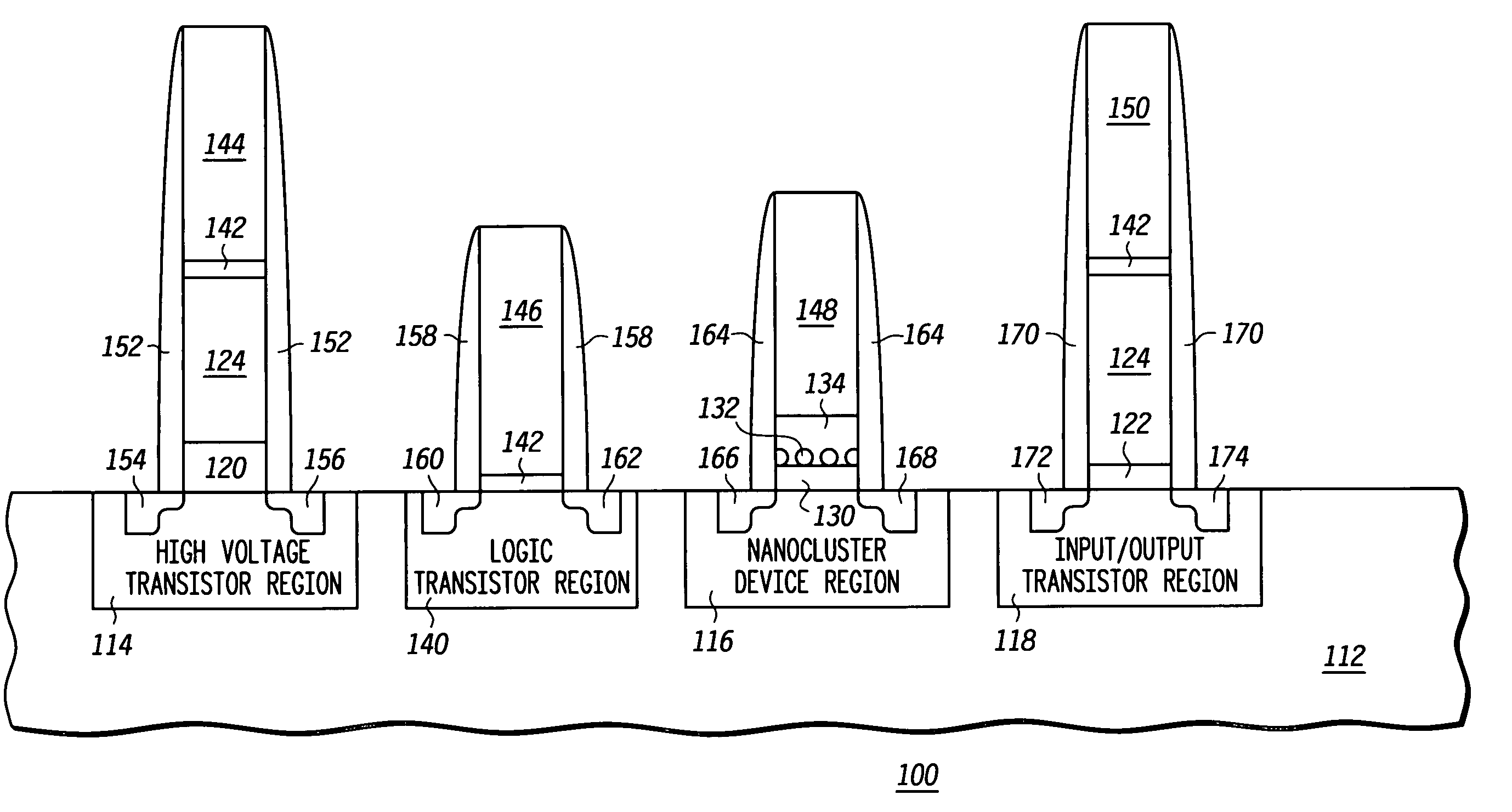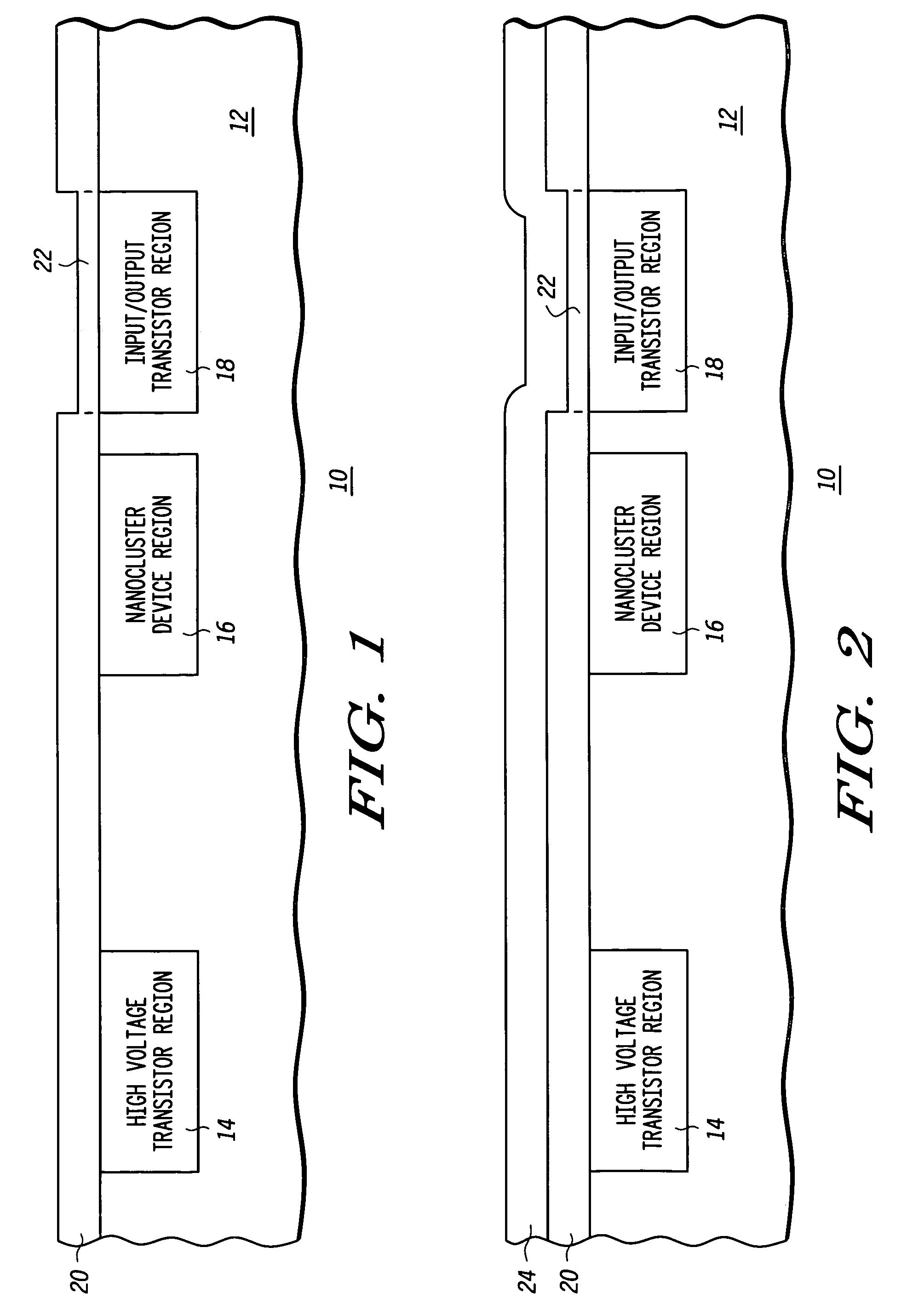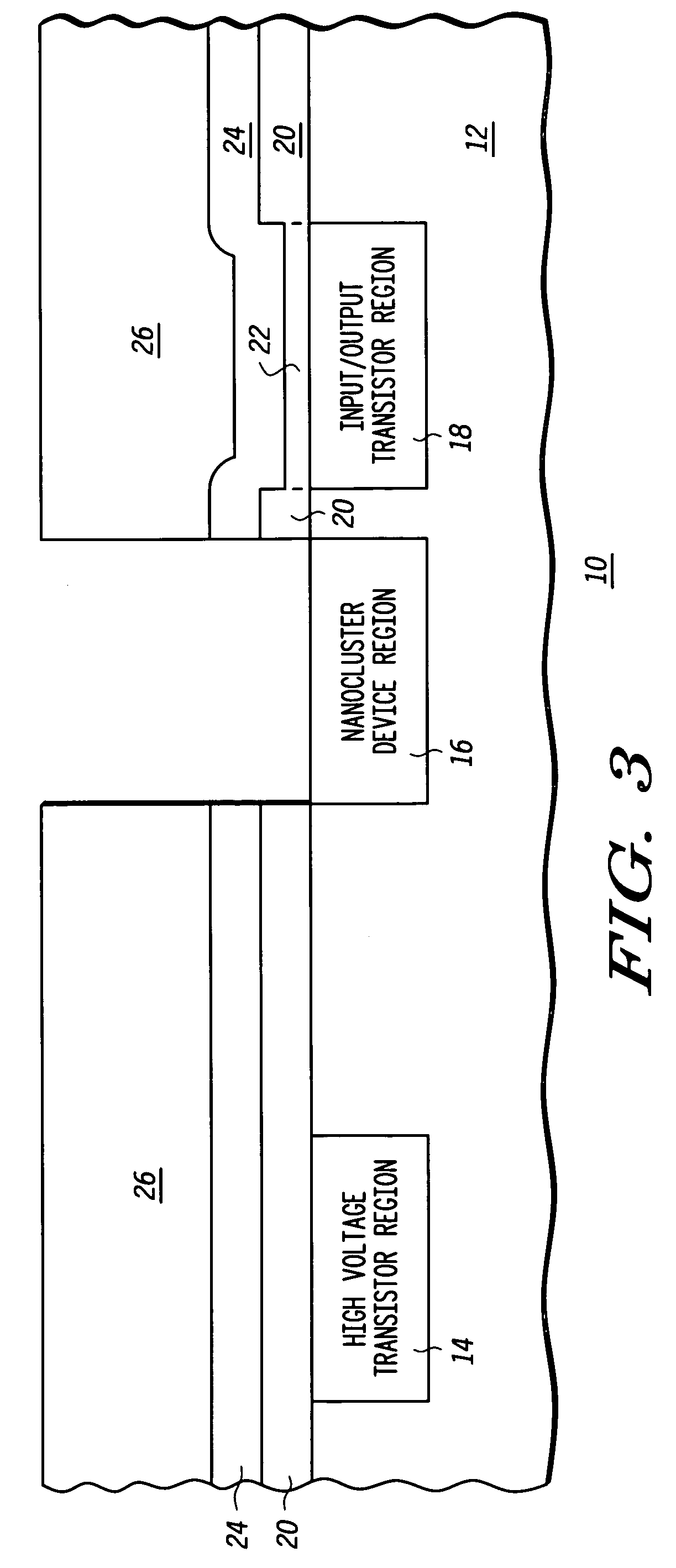Method of forming an integrated circuit having nanocluster devices and non-nanocluster devices
a technology of nanoclusters and integrated circuits, applied in the field of semiconductor devices having nanoclusters, can solve the problems of nanocluster oxidation, damage to memory, and unfavorable increase of nanocluster-based memory bottom dielectric thickness
- Summary
- Abstract
- Description
- Claims
- Application Information
AI Technical Summary
Problems solved by technology
Method used
Image
Examples
Embodiment Construction
[0011]Illustrated in FIG. 1 is an integrated circuit 10 having a substrate 12 that contains various regions with differing types of semiconductor devices. For example, within substrate 12 is a high voltage transistor region 14, a nanocluster device region 16 and an input / output (I / O) transistor region 18. A high voltage transistor, as used herein, is a transistor that is used to program and erase nanocluster charge storage devices or is a device that requires a high voltage (i.e. greater than six volts) operation. An I / O transistor, as used herein, is a transistor that is used to interface the electrical functions performed in the integrated circuit 10 with other components or circuitry (not shown) external to integrated circuit 10. Within each of high voltage transistor region 14, nanocluster device region 16 and the I / O transistor region 18 will be formed a plurality of semiconductor structures to be described below. For drawing simplicity, a single device is illustrated in each o...
PUM
 Login to View More
Login to View More Abstract
Description
Claims
Application Information
 Login to View More
Login to View More - R&D
- Intellectual Property
- Life Sciences
- Materials
- Tech Scout
- Unparalleled Data Quality
- Higher Quality Content
- 60% Fewer Hallucinations
Browse by: Latest US Patents, China's latest patents, Technical Efficacy Thesaurus, Application Domain, Technology Topic, Popular Technical Reports.
© 2025 PatSnap. All rights reserved.Legal|Privacy policy|Modern Slavery Act Transparency Statement|Sitemap|About US| Contact US: help@patsnap.com



